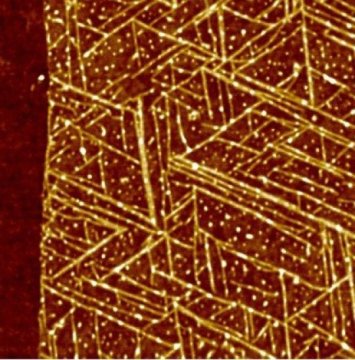Life has always moved around its own array of molecular rules. From the first cells to the biochemistry, evolution has structured wonders such as rough bark, enzymes within plants and rough bark that are useful for various means. But our essentials for analyzing life, to combat illness, substitute lost limbs and revamp damaged tissue – occur from the non-living demesnes like metal and plastics. Although they preserve and save lives, our synthetic processes are based on a chemical composition ideal to our organic elegance.

A solution stands in bridging this gap where biological meets artificial – harnessing biological ideologies to exchange information between the chemistry of our gadgets and biochemistry of our devices. According to the latest study executed by the experts at the University of Washington disclose peptides, which are tiny proteins that carry numerous essential procedures in our cells that can offer a single link.
The group is headed by UW professor Mehmet Sarikaya in the Materials Science and Engineering Department and reveals how a genetically structured peptide can organize into nanowires through 2-dimensional solid surfaces that are only a single layer of atoms thick. Such nanowires organizations are crucial because the peptides reveal information across the nano/bio interface through molecular recognition – the similar principles that encompass biochemical linkages like antibody binding to its particular protein or antigen linking to DNA.
The UW group intends to identify genetically structured peptides with particular structural and chemical properties. They identified a peptide that could link with substances like titanium, gold and even a mineral in teeth and bone. Such results could also root the grounds of future electro-optical and biomedical devices.
“We required to understand the particular molecular linkages between these inorganic and peptide solid surfaces,” confirms Sarikaya. Their studies disclosed that GrBP5 spontaneously structured into systematic nanowire patterns on graphene. With limited mutations, GrBP5 also transformed the electronic conductivity of a graphene-based gadget, the foremost step towards transforming electronic data from graphene to cells through peptides.
Correspondingly, Sarikaya’s group altered GrBP5 to generate identical results on a semiconductor substance – molybdenum disulfide – by transforming a chemical signal into an optical signal. They also computationally expected how distinct how distinct engagements of GrBP5 nanowires would affect the optical signal or electronic conduction of each substance, revealing additional potential within the GrBP5 physical properties.
“In this way, we rest at the floodgates,” says Sarikaya. “Now we require exploring the fundamental properties of such bridge and how we can enhance it to allow the flow of data from electronic and photonic equipment to biological provisions.”
It is the target of a novel endeavor supported by the National Science Foundation of Materials Genome Initiative. It will be headed by Sarikaya and supported by other UW lecturers like Rene Overney, Valerie Daggett, and Xiaodong Xu. Through the process of UW’s CoMotion, he also intends to work with Amazon to cross that nano/bio divide for nano-sensors to identify initial stages of pancreatic cancer.
Filed Under: News


Questions related to this article?
👉Ask and discuss on EDAboard.com and Electro-Tech-Online.com forums.
Tell Us What You Think!!
You must be logged in to post a comment.